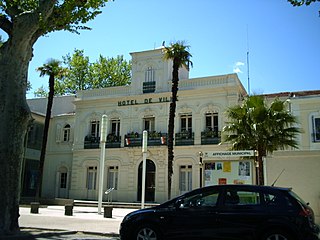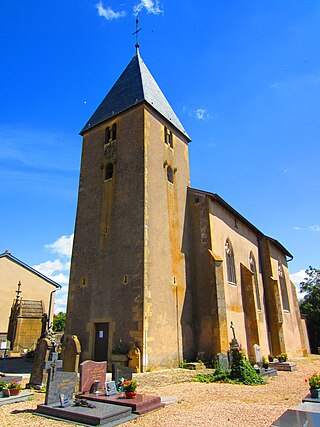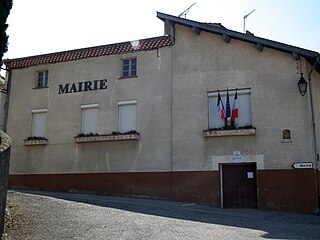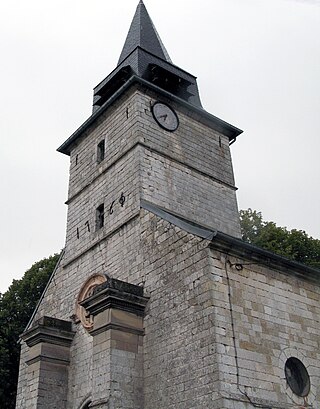
Aigues-Mortes is a commune in the Gard department in the Occitania region of southern France. The medieval city walls surrounding the city are well preserved. Situated on the junction of the Canal du Rhône à Sète and the Chenal Maritime to Le Grau-du-Roi, the town is a transit center for canal craft and Dutch barges.

Gard is a department in Southern France, located in the region of Occitanie. It had a population of 748,437 as of 2019; its prefecture is Nîmes.

Uzès is a commune in the Gard department in the Occitanie region of Southern France. In 2017, it had a population of 8,454. Uzès lies about 25 kilometres north-northeast of Nîmes, 40 kilometres west of Avignon, and 32 kilometres south-east of Alès.

Lunel is a commune in the Hérault department in southern France. Lunel is located 21 km (13 mi) east of Montpellier and 28 km (17 mi) southwest of Nîmes (Gard). Lunel station has rail connections to Narbonne, Montpellier, Nîmes and Avignon.

Sommières is a commune in the Gard department in southern France, located at the border with the Hérault department.

La Garde is a seaside commune in the Var department in the Provence-Alpes-Côte d'Azur region in Southeastern France.

Ouanne is a commune in the Yonne department in Bourgogne-Franche-Comté in north-central France, in the natural region of Forterre.

Sillegny is a commune in the Moselle department in Grand Est in north-eastern France.

Vers-Pont-du-Gard is a commune in the Gard department in southern France.

Théziers is a commune in the Gard department in the Occitanie region in southern France.

Sauveterre is a commune in the Gard department in southern France.

Pouzilhac is a French commune in the Gard department in southern France, formerly Languedoc-Roussillon.

Hulluch is a commune in the Pas-de-Calais department in the Hauts-de-France region of France.

Goudargues is a commune in the Gard department in southern France. Known locally as the Venise Gardoise, because of the canal that flows through it centre. This is lined with pavement cafés and shaded by a two rows of mature plane trees.
Garrigues-Sainte-Eulalie is a commune in the Gard department in southern France. It lies 54 km (34 mi) from Montpellier.

Fourques is a commune and a village in the southeastern corner of the Gard department in southern France, some 4 km (2.5 mi) north of Arles. The village is located at the confluence of the Rhone and the Little Rhone and sprang up adjoining a bridge across the latter built by the Romans. A historic suspension bridge was constructed across the Little Rhone early in the nineteenth century.

Arras-sur-Rhône is a commune in the Ardèche department in the Auvergne-Rhône-Alpes region of southern France.

Acheux-en-Amiénois is a commune in the Somme department in Hauts-de-France in northern France.

Sancergues is a commune in the Cher department in the Centre-Val de Loire region, France.

Niderviller is a commune in the Moselle department in Grand Est in north-eastern France. It is mostly known for the Niderviller pottery, established in 1735 and still producing there.























